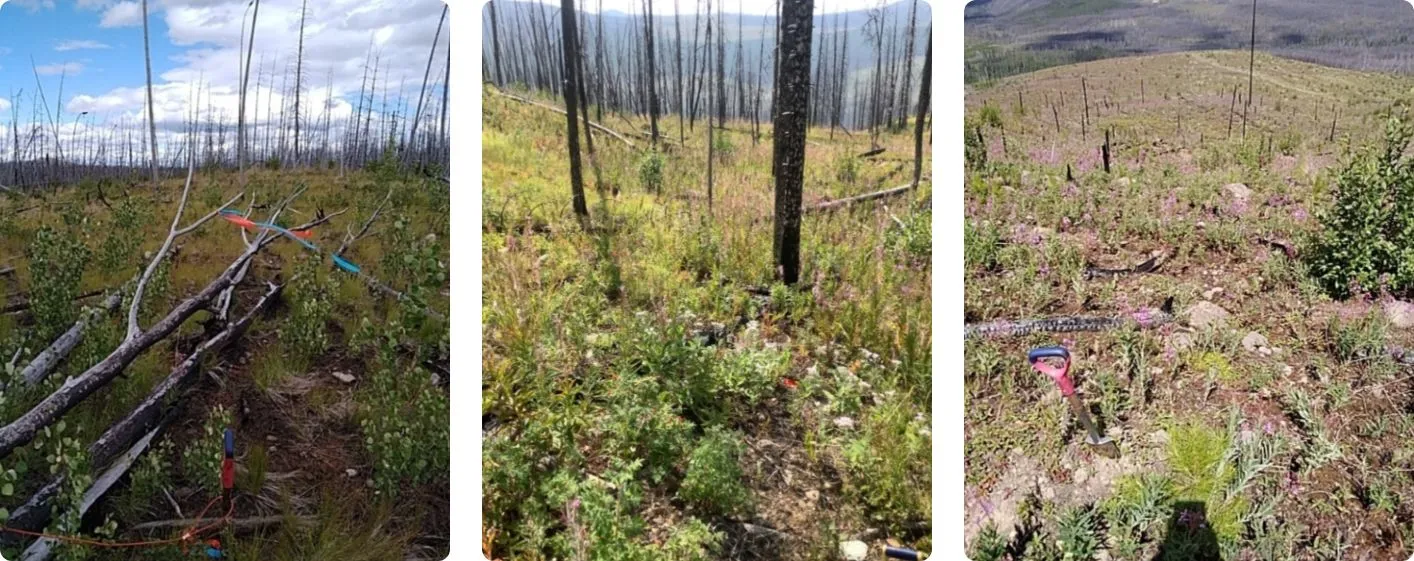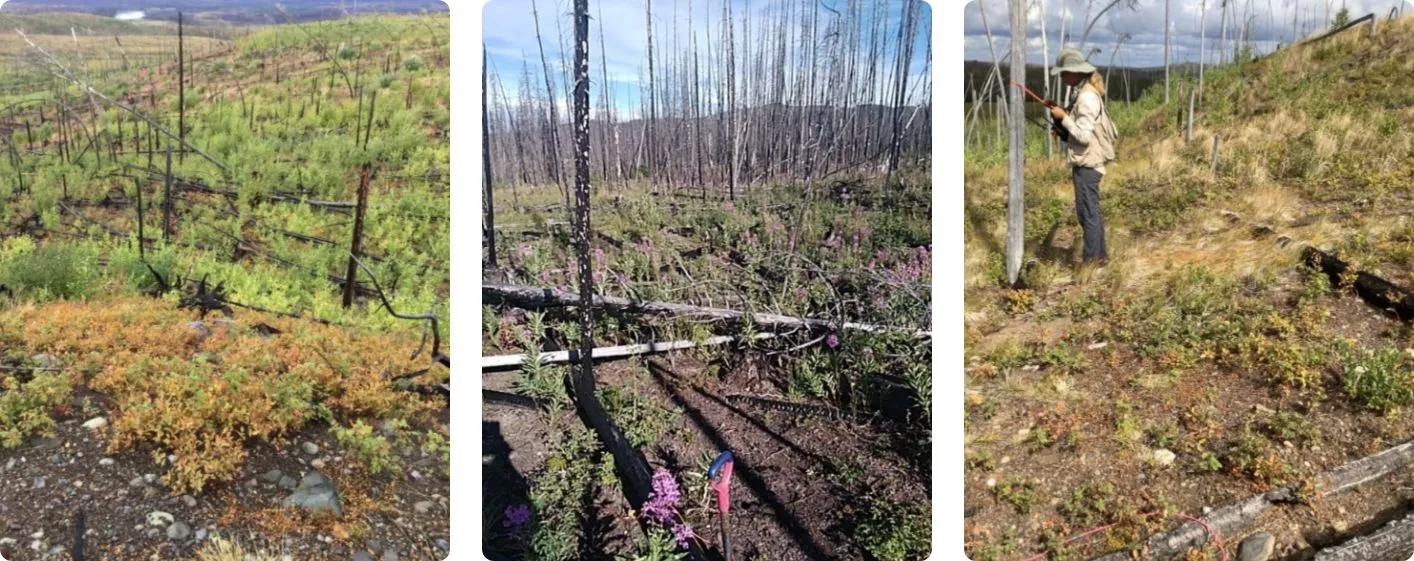We're committed to building and expanding forests to capture carbon and lessen the impact from our flights, while supporting the habitats of animal species and improving air and water quality.
Nazko Wildfire Restoration Project
Location: Nazko Lake, Cariboo, BC, Canada
Project Description
This project will plant tree seedlings to reforest previously forested lands that were severely impacted by the 2017 Plateau Fire near Nazko, British Columbia (BC). The sites in this project have been surveyed and were found to have little to no natural regeneration coming in after the wildfire. When there is natural regeneration in this part of BC, it is mostly lodgepole pine and trembling aspen due to their respective adaptations for regenerating after a wildfire. By planting we are able to increase the species diversity by including native species that are not so well adapted to coming back after a wildfire such as hybrid spruce and Douglas-fir.
Planting prescriptions for each site have been made based on survey data and the ecology of each planting site. All tree species are native to British Columbia and are chosen to ensure each site is planted with an ecologically suitable species mix. One year old seedlings will be grown at commercial nurseries and then shipped to the planting location. The seedlings will be planted by professional tree planting contractors at a density of 1800 per hectare. Quality assurance is conducted on all planting sites to ensure that the prescription is followed and that the trees are planted in such a way that gives them the best chance of success.

Ecological Benefits
The Plateau wildfire in 2017 burned 545,151 hectares, with approximately 30-40% of this area experiencing a stand-destroying fire. Some areas will regenerate naturally from seed sources that survived the fire. Lodgepole pine cones are specifically adapted to release their seeds following a wildfire. Areas that had few lodgepole pine before the fire, burned with a very high fire intensity, or have difficult conditions for seed germination, will take many decades to recover without tree planting.
Planting ensures that all the benefits forests provide will return to the landscape much faster than if left to natural processes. These benefits include the provisions of food sources, fuel, and medicinal plants; atmospheric carbon sequestration; regulation of the hydrological cycle; and wildlife habitat. Wildlife species that will benefit from this project include black and grizzly bears, moose, mule deer, cougars, grey wolves, snowshoe hares, sandhill cranes, bald eagles, and many more small mammals, birds, reptiles and amphibians.
Intense wildfires can have substantial effects on the relationship between water and forest soils by removing the organic layers that protect the underlying mineral horizons. In the absence of the top organic layers, the mineral horizons are exposed to direct precipitation, which can lead to increased erosion and soil instability.

Tree Species
Douglas- fir (Pseudotsuga menziesii) 12%Lodgepole pine (Pinus contorta) 17%
Hybrid spruce (Picea glauca x engelmannii) 69%
Western larch (Larix occidentalis) 1%
Ponderosa pine (Pinus ponderosa) 2%
 United States
United States